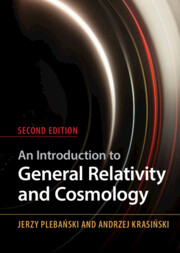1 - How the theory of relativity came into being (a brief historical sketch)
Published online by Cambridge University Press: 30 May 2024
Summary
The logical and observational problems of Newton’s theory of gravitation that led Einstein to think about general relativity are briefly presented. In particular, this was the anomalous orbital motion of Mercury and the failed attempts to explain it within Newton’s theory. The local equivalence of inertial and gravitational forces is demonstrated.
- Type
- Chapter
- Information
- Publisher: Cambridge University PressPrint publication year: 2024

